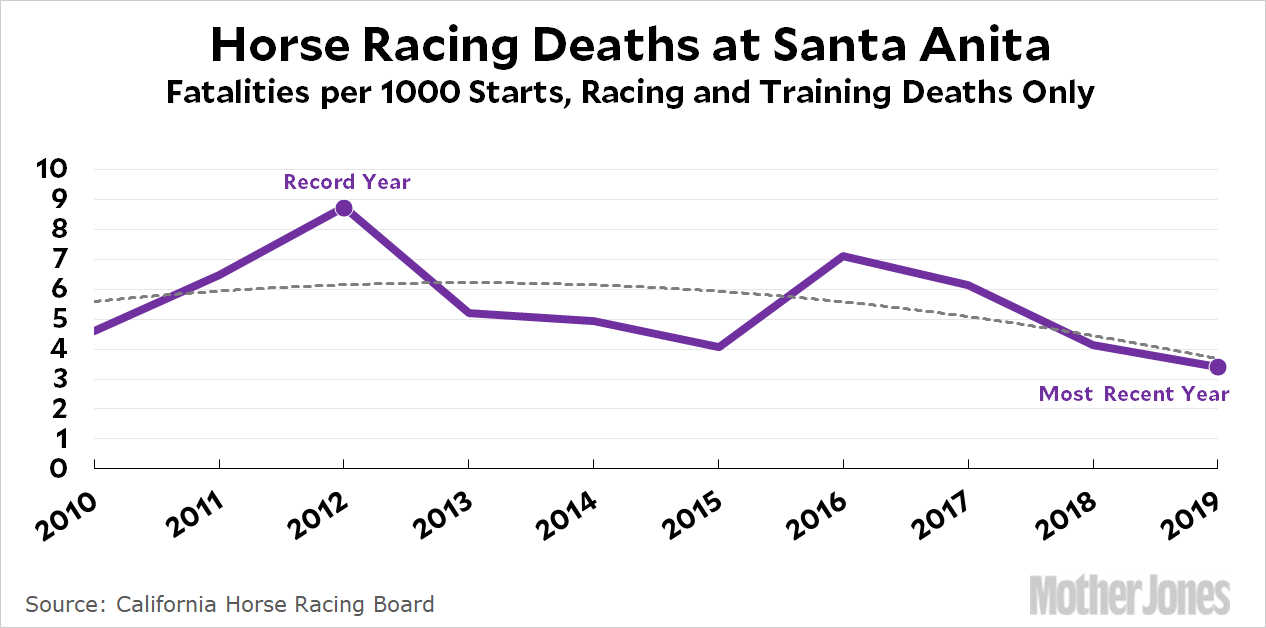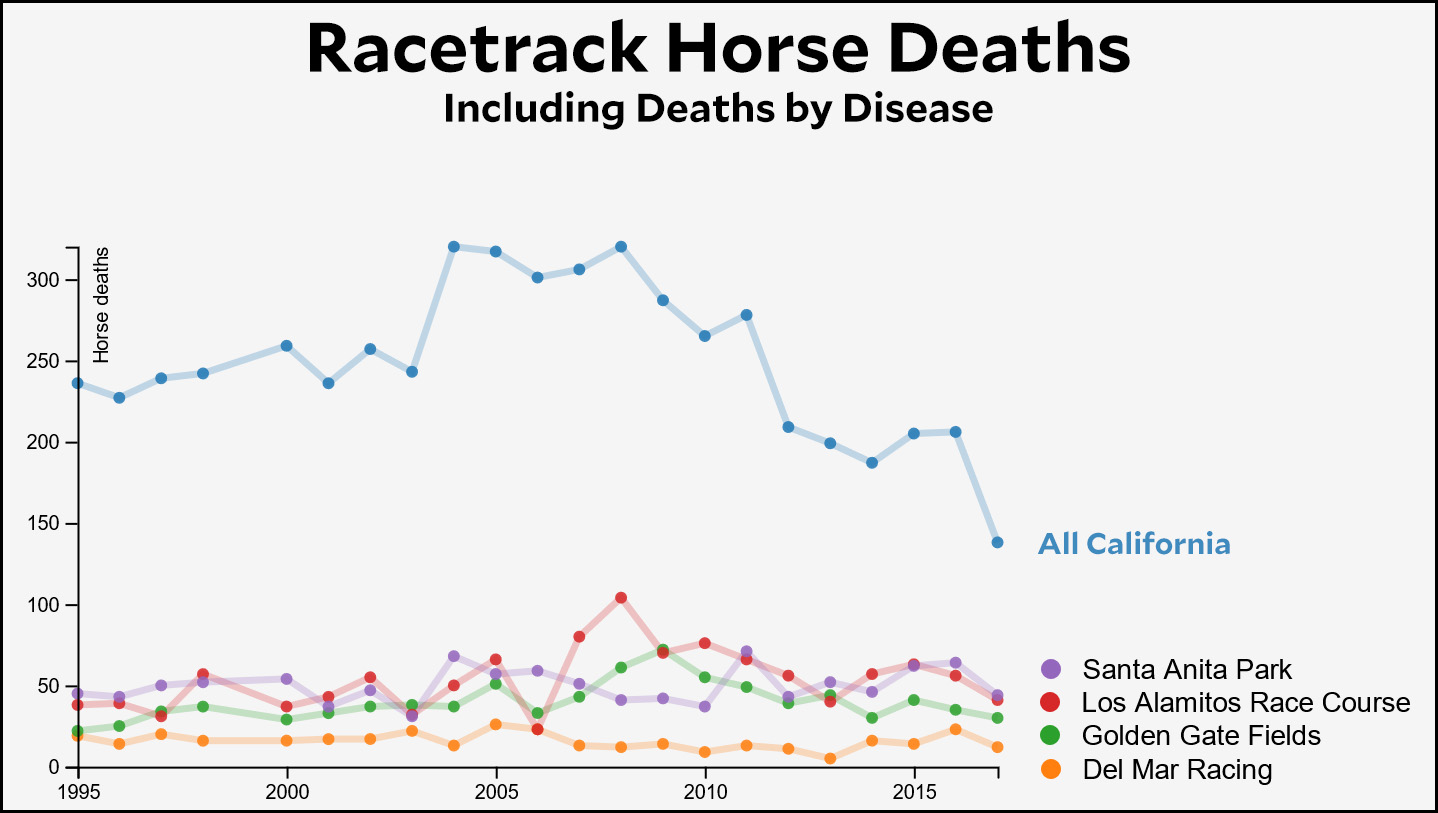Horse racing season has started at Santa Anita and the carnage is already in high gear:
This week, there is plenty more anxiety as attention turns to the Breeders’ Cup races, horse racing’s version of the Super Bowl. There will be 14 races, each with purses of at least $1 million, on Friday and Saturday at Santa Anita — over a track where there have been six horse fatalities in the last six weeks.
Thirty horses died during Santa Anita’s last winter-spring meet, and there was some speculation that the sport’s annual showcase might be moved to another venue. Santa Anita’s owner, the Stronach Group, responded to the crisis by enacting several reforms in medication usage and veterinarian care that will be used for the Breeders’ Cup races.
Let’s do some simple arithmetic. The season lasts 26 weeks, which means that last year 1.15 horses died per week. This year, 1.0 horses have died per week. So things are getting better. However, a more accurate way to measure this is horse fatalities per 1000 starts, which accounts for how many races are run. Here you go:

Horse fatalities have been dropping for four years in a row and are currently lower than they were in 2010.
I never really got an answer to my question from last year, namely that the supposed record number of deaths at Santa Anita wasn’t a record at all. It wasn’t even just normal. It was actually less than in any year of the past decade. So why the sudden outcry?
This year it appears that the fatality rate is down even further. And maybe that’s not good enough. Maybe it’s still high compared to other tracks:

Nope. Del Mar clearly has a low death rate, but the other three California tracks are all in the same general area.
You can get different results if you use different statistics, but this seems like the simplest and fairest. And what it says is that Santa Anita has been improving over the past five years and is now about average for horse fatalities in California. So why the hue and cry?
POSTSCRIPT: The linked article does have some interesting things to say about bisphosphonates, an undetectable drug that can make a horse’s x-rays look better to a buyer, but at a cost of more injuries down the road. That’s worth reading about.

















